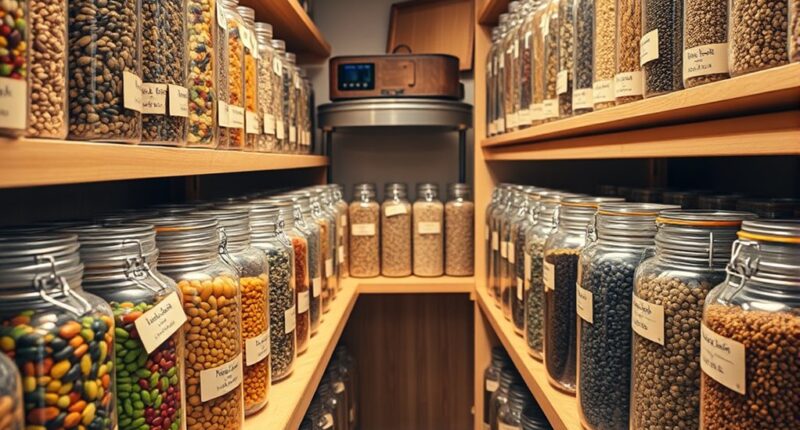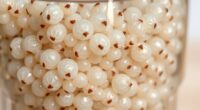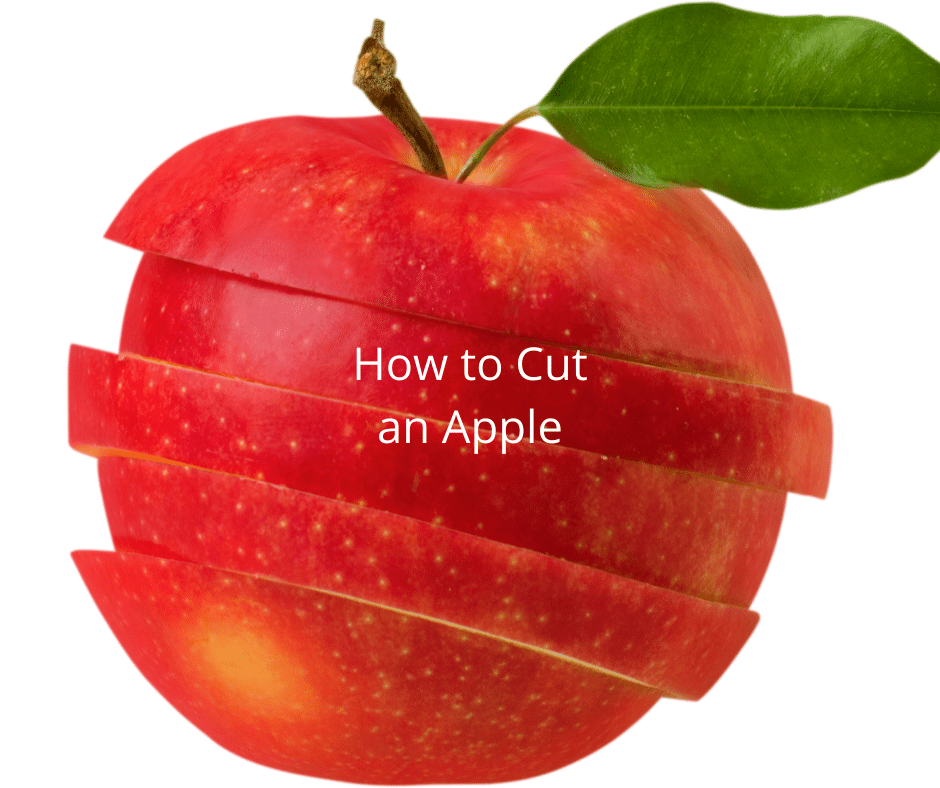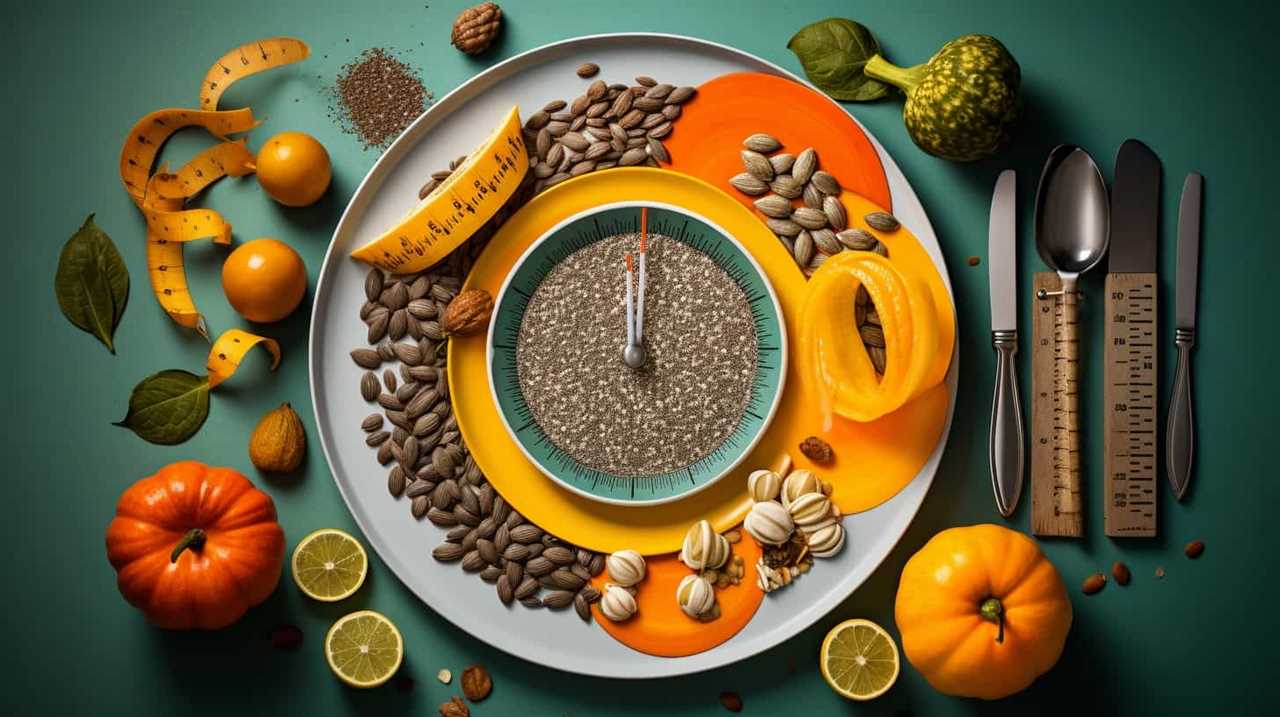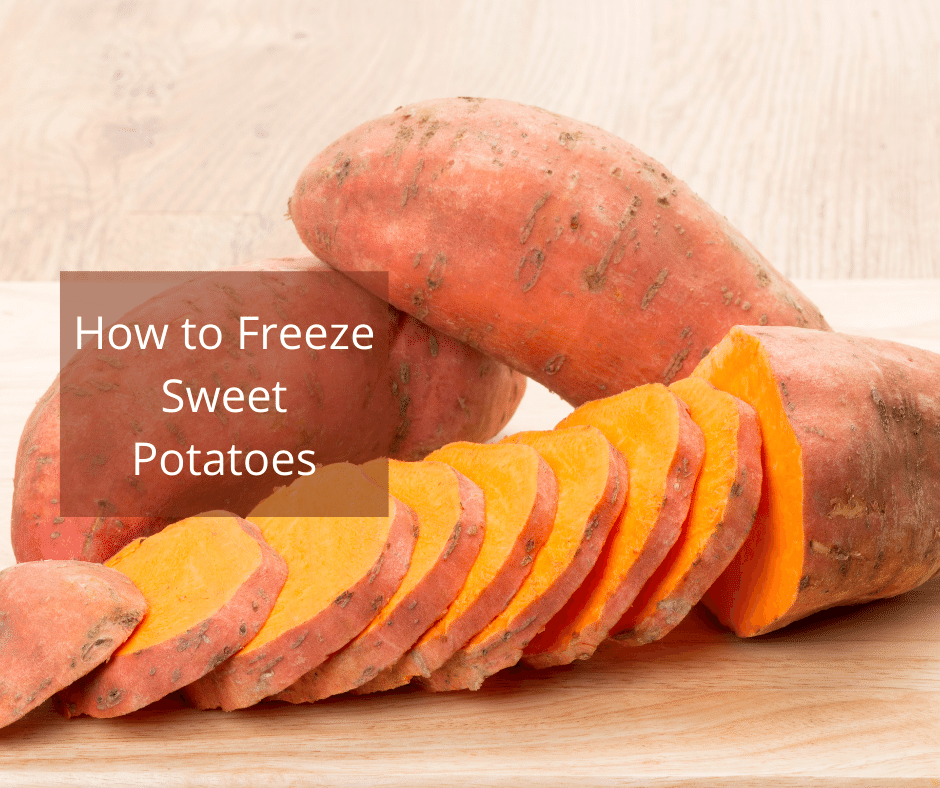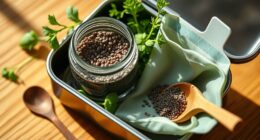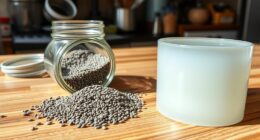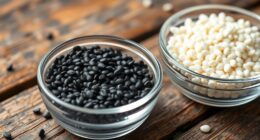To store seeds for long-term viability, keep them in cool, dry, dark conditions with temperatures between 32°F and 41°F. Use airtight containers and add silica gel packs to absorb moisture. Label your seeds clearly and minimize opening the containers to prevent humidity changes. Proper storage can markedly extend seed life, especially for beans and peppers. To discover how to optimize your seed preservation efforts, continue exploring effective storage tips and techniques.
Key Takeaways
- Store seeds in cool (32–41°F), dry, dark, airtight containers to prevent moisture and light exposure.
- Use desiccants like silica gel packs to control humidity and maintain seed dryness.
- Label containers clearly with seed variety and storage date for effective rotation.
- Minimize container openings to reduce temperature and humidity fluctuations that can harm seeds.
- Understand species-specific seed longevity to optimize storage duration and plan seed use accordingly.
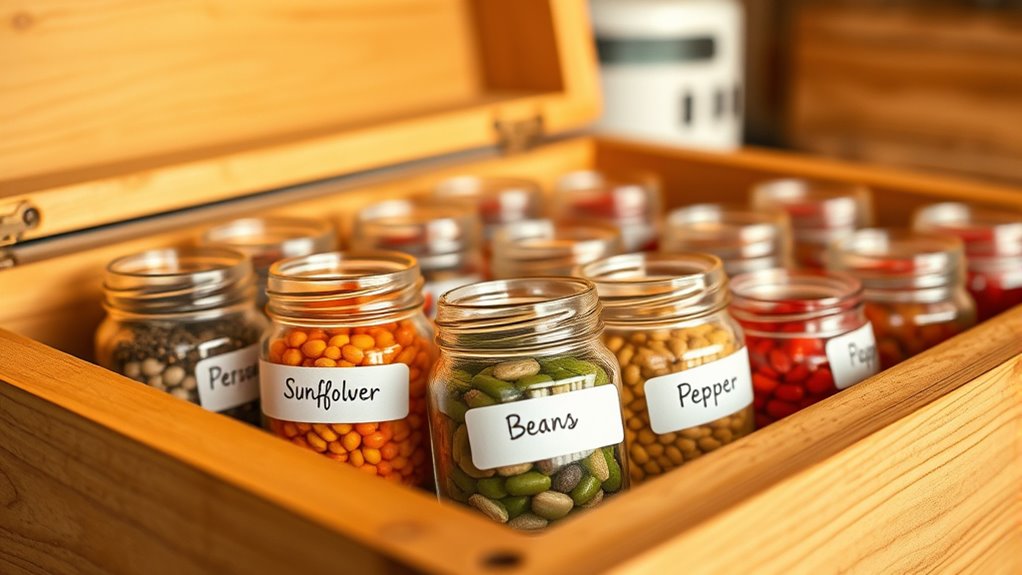
Proper seed storage is vital for maintaining seed viability and guaranteeing a successful planting season. When seeds are stored correctly, they stay healthy and capable of germinating when you’re ready to plant. The key to successful seed storage lies in understanding how to preserve seed viability over time, which depends heavily on optimizing storage conditions. Seeds are living entities, and their ability to sprout diminishes if exposed to unfavorable environments. To keep your seeds viable for months or even years, you need to pay close attention to factors like temperature, humidity, and light.
First, consider the storage environment. Seeds thrive best in cool, dry conditions. High temperatures accelerate seed aging and reduce viability, so aim for a consistent, cool temperature—ideally between 32°F and 41°F (0°C to 5°C). Many gardeners use refrigerators for long-term storage, but you must guarantee the seeds are kept in airtight containers to prevent moisture from condensing and damaging them. Moisture is one of the biggest enemies of seed viability because it can lead to mold growth and premature sprouting. Keep humidity levels low and stable; using silica gel packs or desiccants inside your storage containers can help absorb excess moisture and maintain the proper environment.
Light exposure also influences seed longevity. Seeds should be stored in a dark place because light can degrade seed quality over time. An opaque container or a dark storage box is ideal, shielding your seeds from light and helping sustain their viability. Also, avoid frequent opening of your storage containers, as temperature and humidity fluctuations can harm the seeds’ health. Consistency is vital; abrupt changes can cause condensation and compromise seed quality.
Maintaining proper storage conditions can significantly extend seed lifespan and improve germination rates. Label all your seeds clearly with the variety and date of storage. Proper labeling ensures you use the oldest seeds first and keeps track of your collection. As a general rule, most seeds remain viable for one to five years, but this varies depending on the species. For example, carrots and onions tend to have a shorter shelf life, while beans and peppers can last longer if stored properly.
Frequently Asked Questions
How Long Can Seeds Typically Be Stored Before Losing Viability?
Seeds can typically be stored for several years before seed dormancy and seed longevity decline, but this varies by species. Proper storage conditions, like cool, dry, airtight environments, help maintain viability longer. You should check seed age and viability regularly, as some seeds may lose germination ability sooner. With good storage, many seeds stay viable for 2-5 years, while others, like onion or parsley, last only 1-2 years.
Which Seeds Require Refrigeration or Special Storage Conditions?
Imagine your seeds as delicate travelers needing special gear for long journeys. Some, like peppers, apples, and citrus, have seed dormancy and thick seed coats that demand refrigeration or cool, dark storage to stay viable. Without proper conditions, their seed coats can trap moisture, risking mold or rot. To keep them thriving, store these seeds in airtight containers in the fridge, mimicking their natural environment and ensuring a successful voyage.
How Can I Test Seed Viability Before Planting?
To test seed viability before planting, perform a simple germination test. Place about 10-20 seeds on a damp paper towel, fold it, and keep it in a warm, dark spot. Check after a few days to see how many seeds sprout. This viability testing helps you determine the percentage of seeds that are likely to germinate, ensuring better planting success and efficient use of your seed stock.
What Are Common Mistakes to Avoid in Seed Storage?
Avoid letting your seed stash turn into a moldy swamp—moisture is the enemy here. Always keep your seeds dry and stored in airtight containers. Don’t forget to label your seeds clearly; confusion can lead to planting the wrong varieties. Also, steer clear of inconsistent temperatures, which can damage seed viability. These mistakes can turn your seed-saving efforts into a soggy mess, so stay vigilant and organized.
Do Different Seed Types Have Unique Storage Temperature Needs?
Different seed types do have unique storage temperature needs. For example, some seeds like beans and peas prefer cooler, dry storage, while others like citrus seeds need slightly warmer conditions. You should always check each seed type’s recommended storage conditions to guarantee long-term viability. Maintaining proper temperature and humidity levels tailored to each seed type helps prevent spoilage and preserves seed quality, ensuring successful planting later on.
Conclusion
Storing seeds properly might seem tricky at first, but with the right techniques, you can keep your seeds viable for years. Don’t worry about losing that precious harvest—just follow the steps, keep your seeds cool and dry, and you’ll enjoy healthy plants season after season. Imagine planting seeds you stored yourself, knowing they’re fresh and ready to grow. With a little effort, you’ll turn seed storage into a simple, rewarding part of gardening life.
